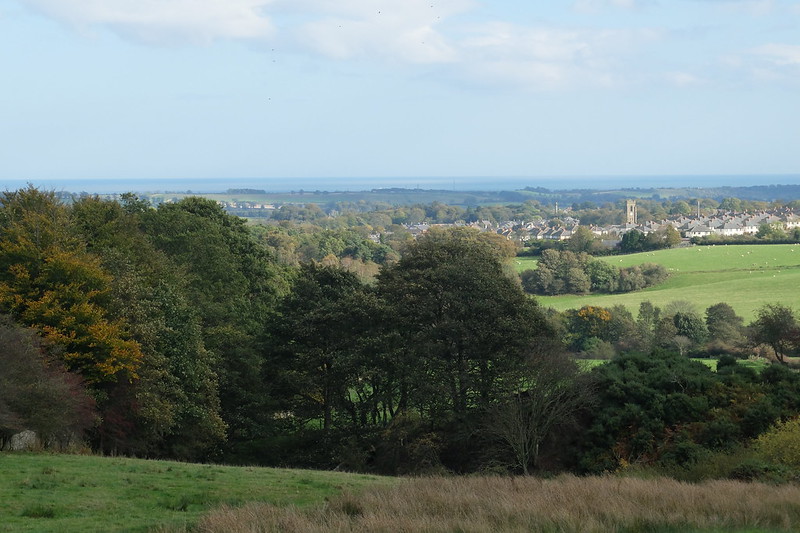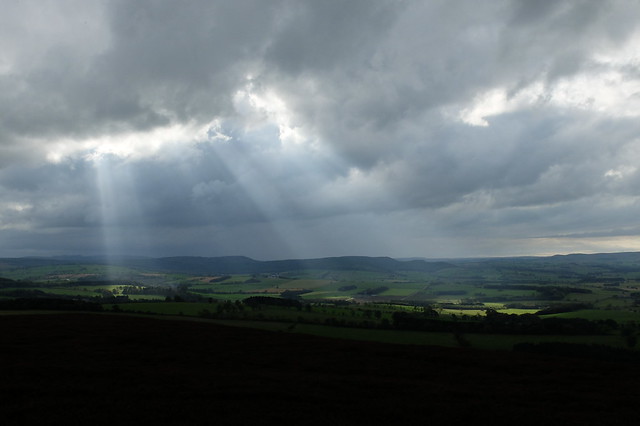The most extensive list of UK bandstands that I have found is the list of Vintage Bandstands, here. This has 334 distinct entries, but I don't think they all still exist.
In 2001 the Urban Parks Forum surveyed local authority parks in the UK. Out of the 438 bandstands they could identify 203 had already been lost, 186 were in use, or under repair, and 49 were abandoned or unused. Since then the Heritage Lottery Fund has been investing in the restoration and rebuilding of bandstands. I can't find more recent data, so for now let's assume that there are still more than 200 bandstands in public parks in the UK.
 |
| Bandstand in Sefton park, from Wikimedia |
Across Britain, there are about 142 bandstands that are listed for architectural or historic interest. I have locations for those in England, and roughly three-quarters of them lie inside public parks, and roughly a quarter outside public parks. Around the same proportion of the bandstands in OSM are within a park, so it is probably fair to assume that by concentrating on parks, the survey by the Urban Parks Forum was primarily concerned with about three-quarters of the bandstands in the UK.
So as a starting point I'm going to assume that there are about 275 bandstands left in Britain, of which about 213 are inside public parks, and 62 outside public parks - fewer than on the Vintage Bandstands list, and more than the Urban Parks forum suggests.
I've managed to find 223 bandstands in the OSM data for Britain, which is about 80% of my estimated total. If these features really are bandstands, then that's an impressive result for a feature that I thought would fall well outside the mainstream.
Our ancestors obviously knew how to build structures that would maintain their appeal, and that's part of the attraction of examining data on bandstands. But I also wanted to look closer at the data because the tagging of bandstands in OSM is particularly inconsistent, and I thought we might learn something from that.
A fairly simple search of the OSM database for anything that mentions "bandstand" (and spelling variations) will pick up 247 features. On inspecting the data we find about dozen of these are false positives: completely different features with the word "bandstand" in the name. Ten appear to be duplicates. If two different features within a few hundred yards of each other both describe a bandstand then they are probably referring to the same structure in the real world. Some of the duplicates occur because contributors have added and tagged both a way and a node. Some may be because one attempt hasn't rendered and a later contributor thought the feature was missing. In a few cases contributors seem to have been uncertain how to tag the feature, so they have added more than one option.
About 50 of the bandstands in the OSM database correspond to the 93 listed bandstands in England, so contributors have added more than half of the bandstands that are listed by English Heritage. Very few have been marked as a structure with listed building protection. If the overall totals are correct, then contributors have located more than 80% of all bandstands, but less than 60% of listed bandstands. I'm not sure what to make of that.
For processing this data we really want to find bandstands based on well-defined attributes. Interestingly, with bandstands we find more variation in the choice of keys than in the choice of values. The most common contents of the value, by far, is "bandstand", with "band_stand" accounting for about one in thirty values. The keys that have been marked as a bandstand include "leisure", "amenity", "building", "historic", "type", "building:use", "tourism", "shelter_type", and "man_made". It's interesting that bandstand contributors choose quite a wide variety of different keys with quite a narrow range of values.
There are 233 features that are recognisable as a bandstand from the data content. This includes 10 that appear to be duplicated, which mucks the numbers up slightly. I've slightly fudged this in the chart - to keep things simple.
The tag "leisure=bandstand" is recommended in the documentation, and accounts for about 24% of all UK bandstands (30% of the ones I found, and almost half of the bandstands that have been coded in a structured way). The "amenity" and "building" tag with a value of bandstand account for another 18% of all bandstands. Less common tags such as "historic", "type", "building:use", "tourism", "shelter_type", and "man_made" account for another 2%. Low usage of "man_made" surprised me, because I thought this would have been seen as more appropriate than "building". Apparently not.
There are probably about 50 UK bandstands that don't appear in the database (yet).
We have to be wary of false synonyms. I've looked at features in the database that correspond to the location of listed bandstands, and along with tagging variations in the OSM data these suggest that some contributors consider "gazebo" and "pavilion" as synonyms for "bandstand". Some just label the feature as a "shelter". A "gazebo" can look similar to a bandstand, although a bandstand is generally larger, raised higher above ground level, and clearly intended for a different purpose. The term "pavilion" might be acceptable as a technical description of the architecture, but in general data users will not be able to use it because it is so widely used to mark a sports pavilion. And "shelter" is a very general category, that doesn't help somebody who wants to identify bandstands.
Now to draw some conclusions.
Although we know for certain that some are missing, there's a case that the OSM database already contains one of the most complete lists of existing bandstands in the UK. With relatively little effort to plug the gaps, and verify existing data this is information that could be used productively, by anyone who wants to do so.
If somebody wants to find bandstands in the database at present they will probably look for values of "leisure", "amenity" or "building" that contain "bandstand". That will uncover almost half of all examples in the database. It starts to get quite complicated for data users to seek out tagging variations and find the next few percent. Searching the "name" tag for variants of "bandstand" will turn up quite a few likely candidates, and might be appropriate in some circumstances,but it would not be reliable enough for systematic processing. Without manual inspection this approach also picks up theatres, cafes, and the like that have been named this way.
The data on bandstands is fairly comprehensive and suggests that contributors can have quite different perspectives on these features. So this is an area where we could (and probably should), encourage more consistency, while tolerating quite a lot of variation in tagging. For the relatively small number of features in the database, bandstands demonstrate an unusually varied use of tags. Whether they realise it or not, different contributors have been marking bandstands according to their function ("leisure=bandstand" or "amenity=bandstand"), according to their form ("building=bandstand", "man_made=bandstand"), or according to their significance ("historic=bandstand"). These are surely all valid approaches, and they are not incompatible with each other. Indeed, quite often they are used together on the same feature. It is quite conceivable that one bandstand will be notable for its historic significance, but no longer in use as an amenity, while another might be in regular use as a leisure facility, but have no historic significance. Some might have changed function ("shelter:type=bandstand"). We don't know how this data might be used in future, so differences such as these ought to be reflected somehow in the tagging. However, the current documentation doesn't give guidance on such subtleties, so the current data probably doesn't record them accurately. All we can really say for now is that features with any of these tags have been recognised and recorded as bandstands.
If the community wants to improve the current data on bandstands then the following might be priorities :
- locate the fifty or so missing examples
- add structured tagging to the hundred or so bandstands which can currently only be found by name
- fix inconsistencies - such as combining duplicates
- encourage considered use of the existing tagging options to capture and retain information that can be collected in the field
- add attributes (such as listed building status) that could be of interest or value to data users
- find a group of bandstand enthusiasts who might be interested in verifying the data, finding innovative uses for it, and taking things further
- celebrate with an outdoor concert
















